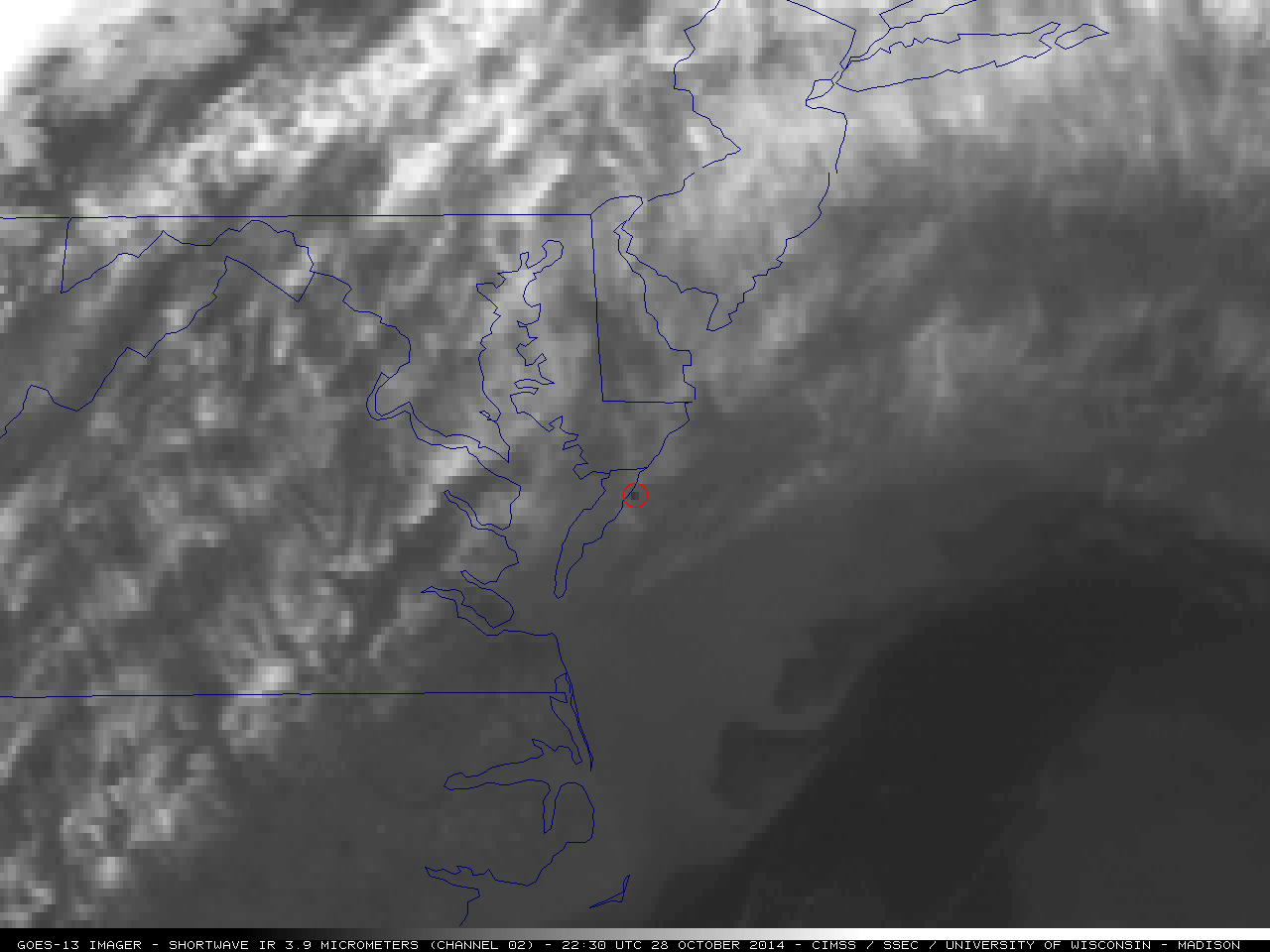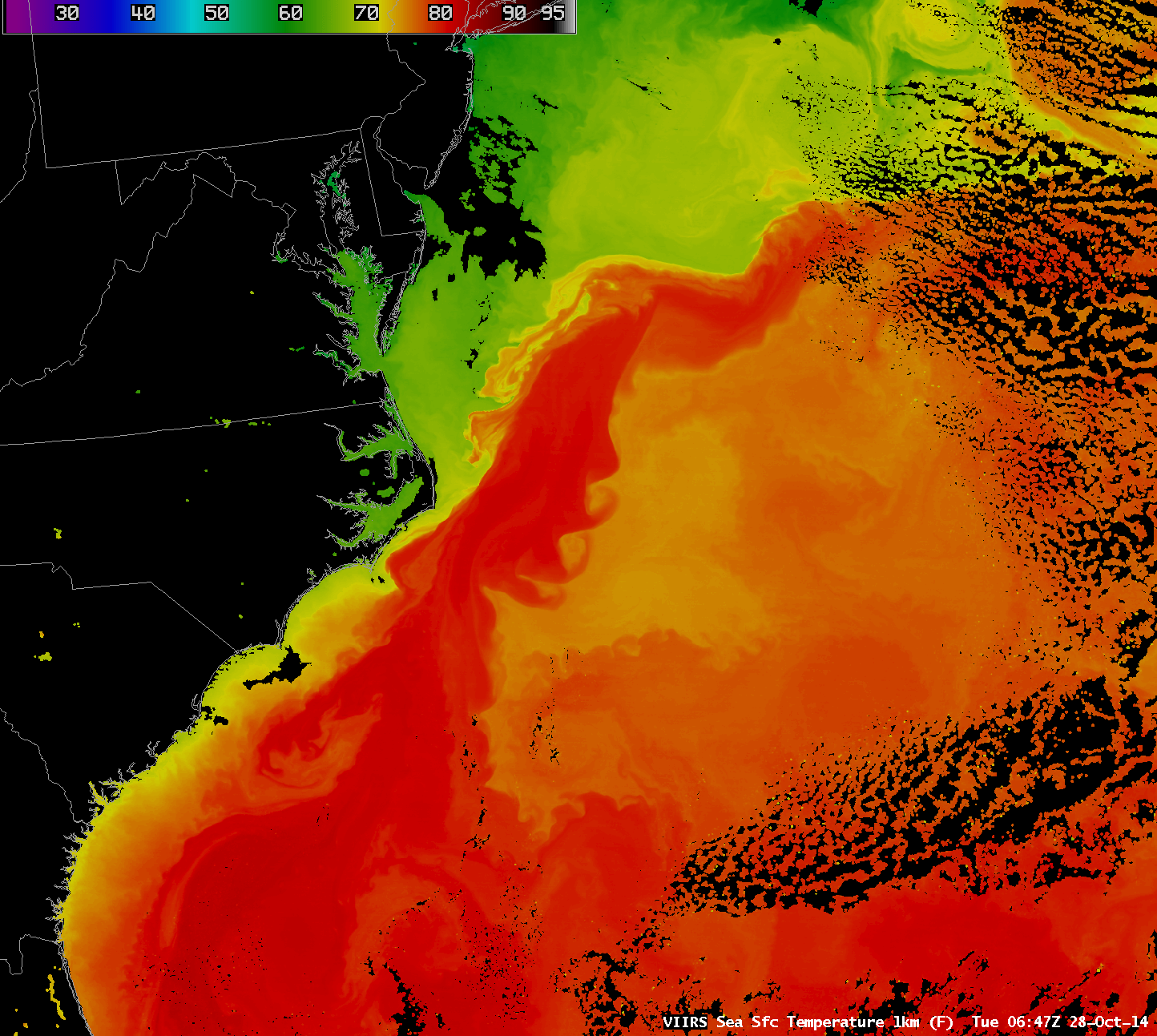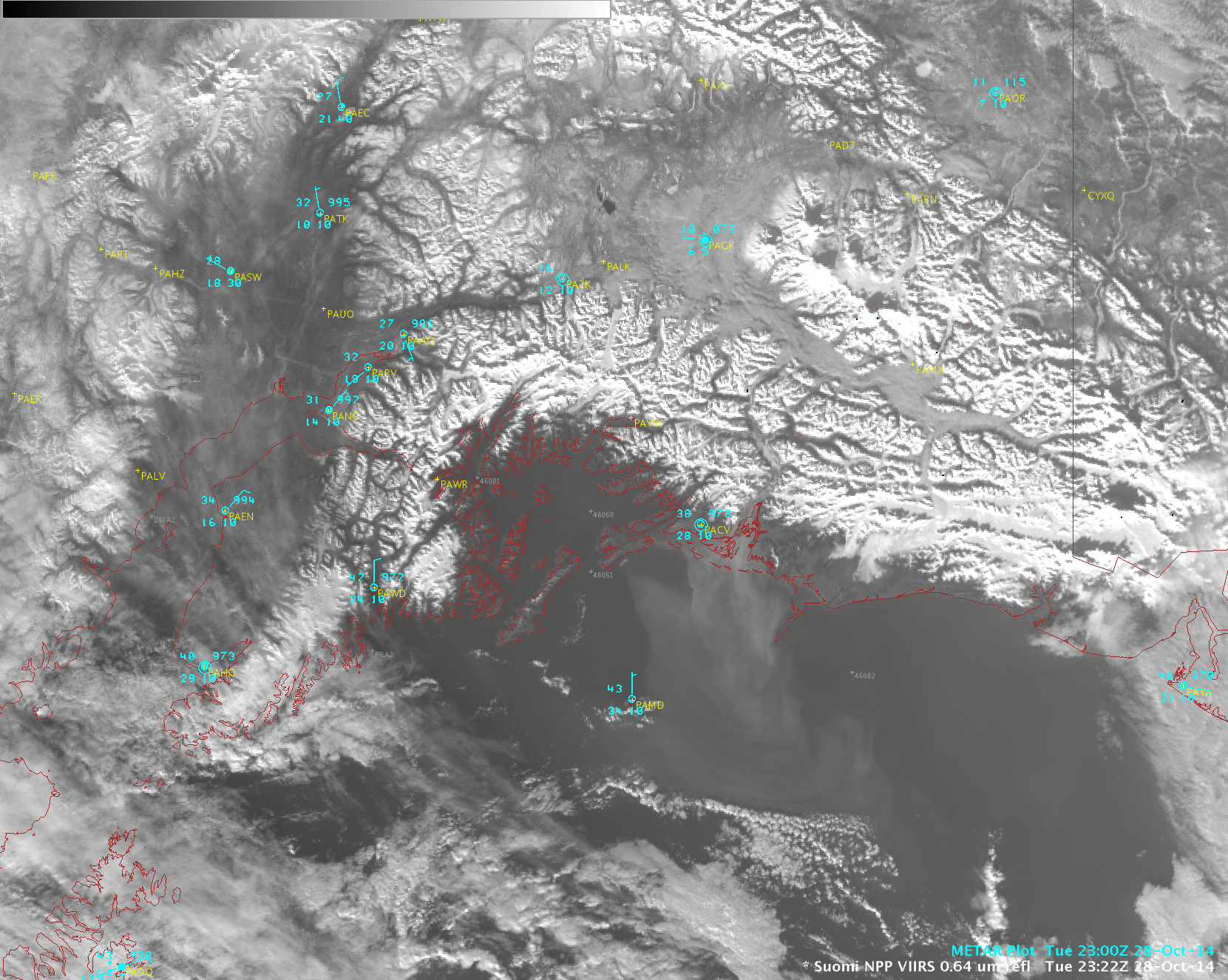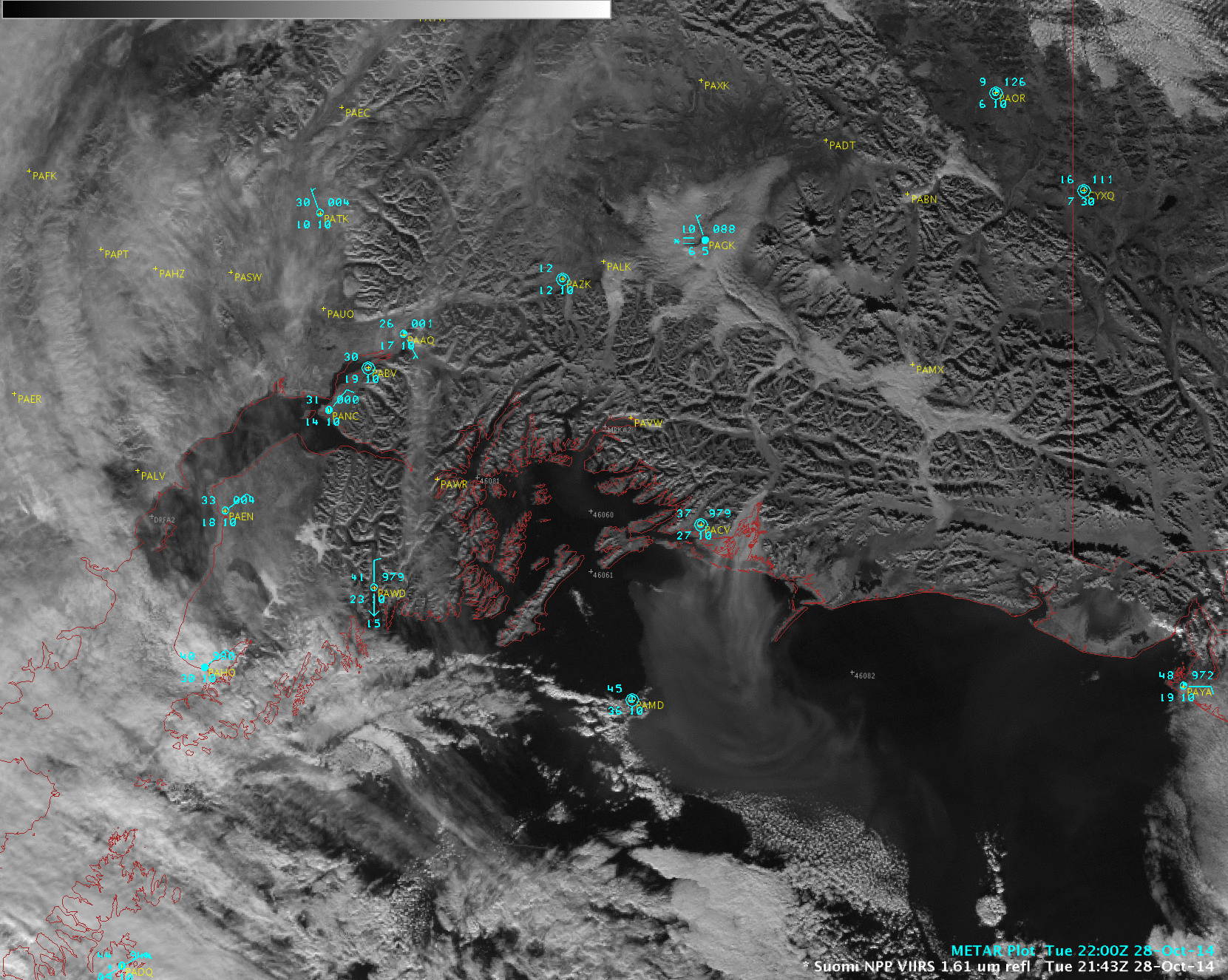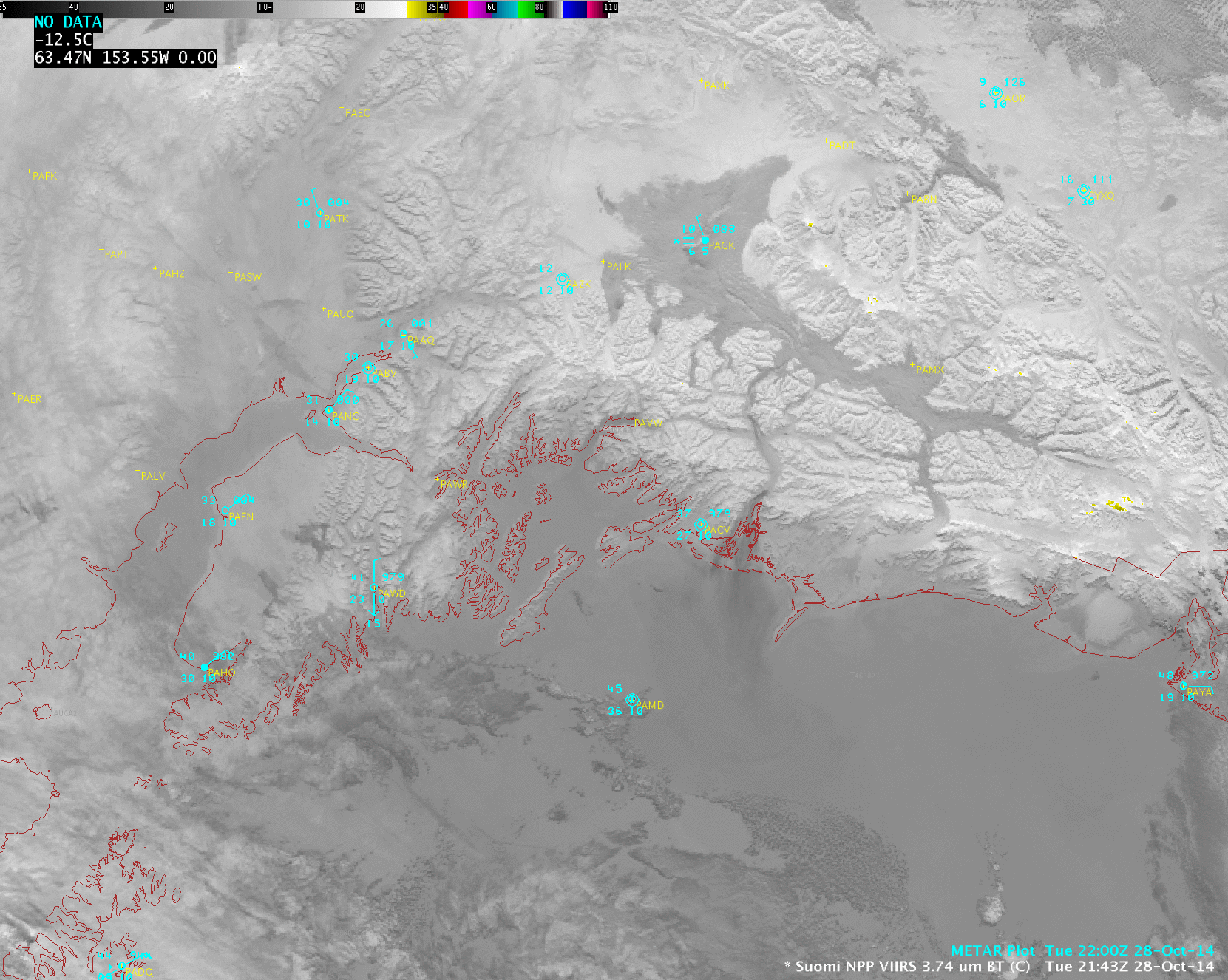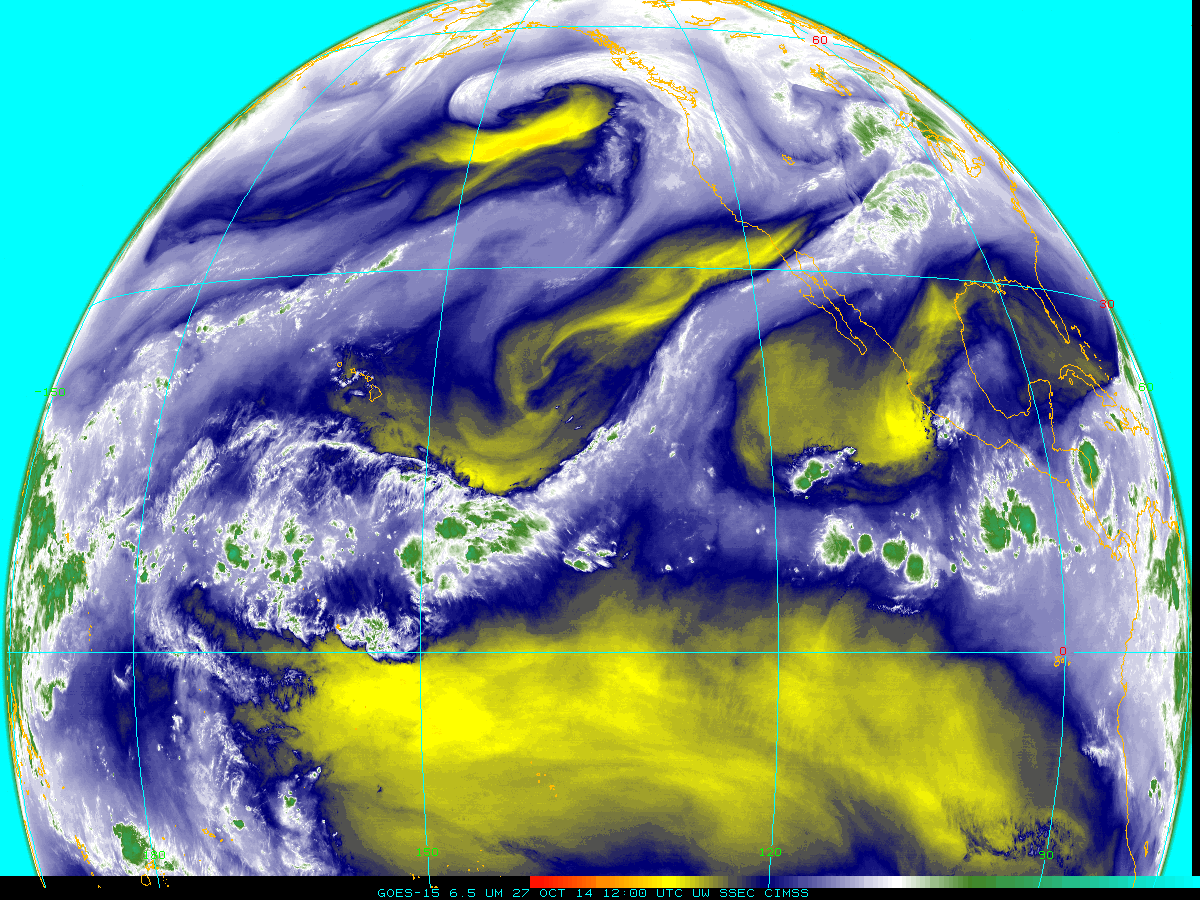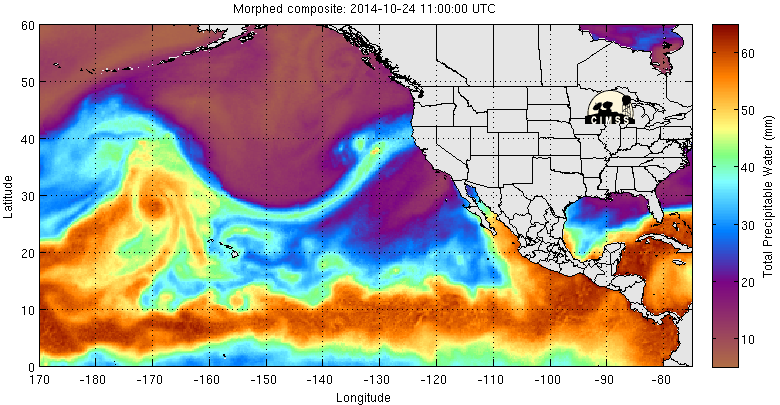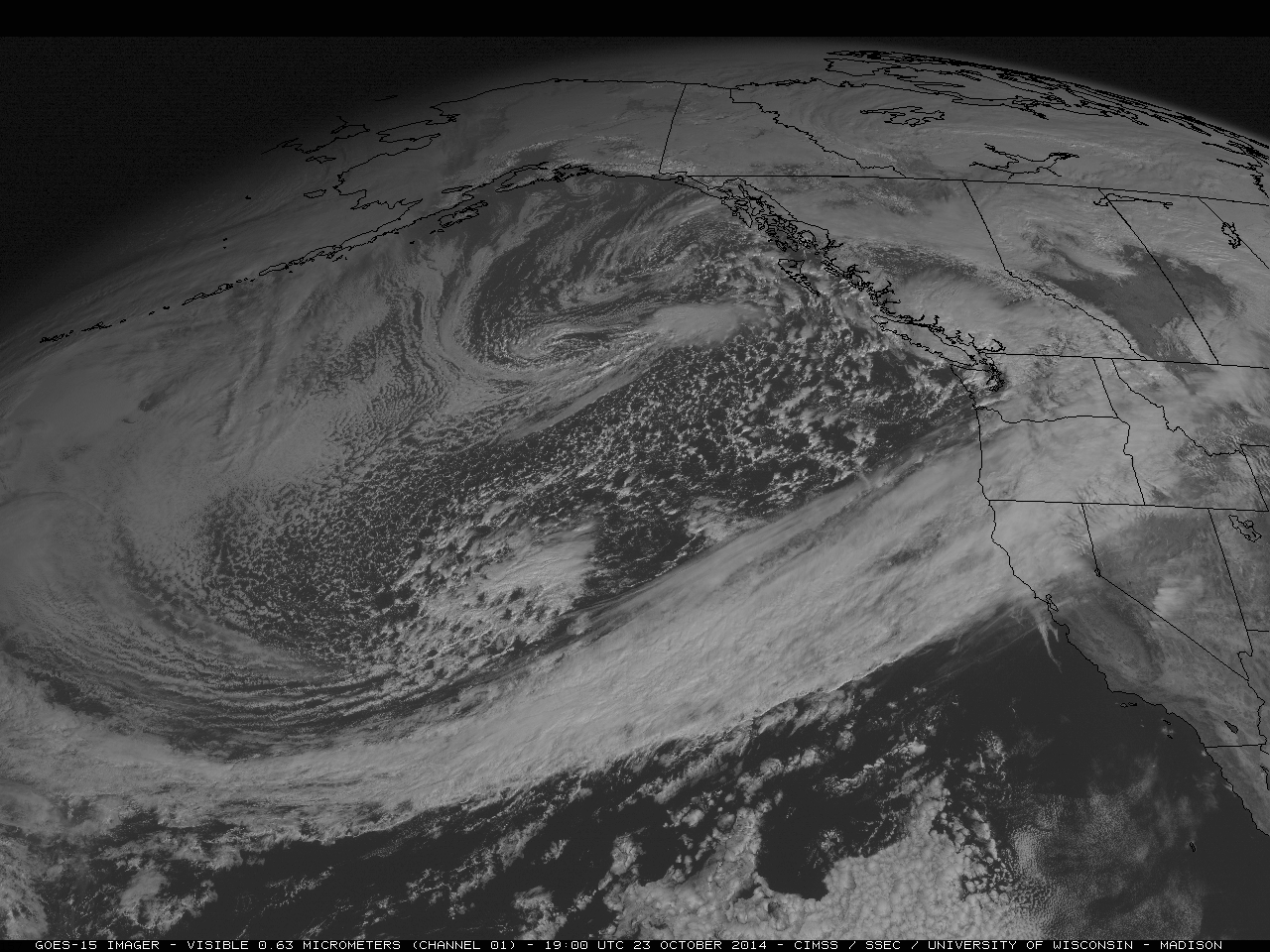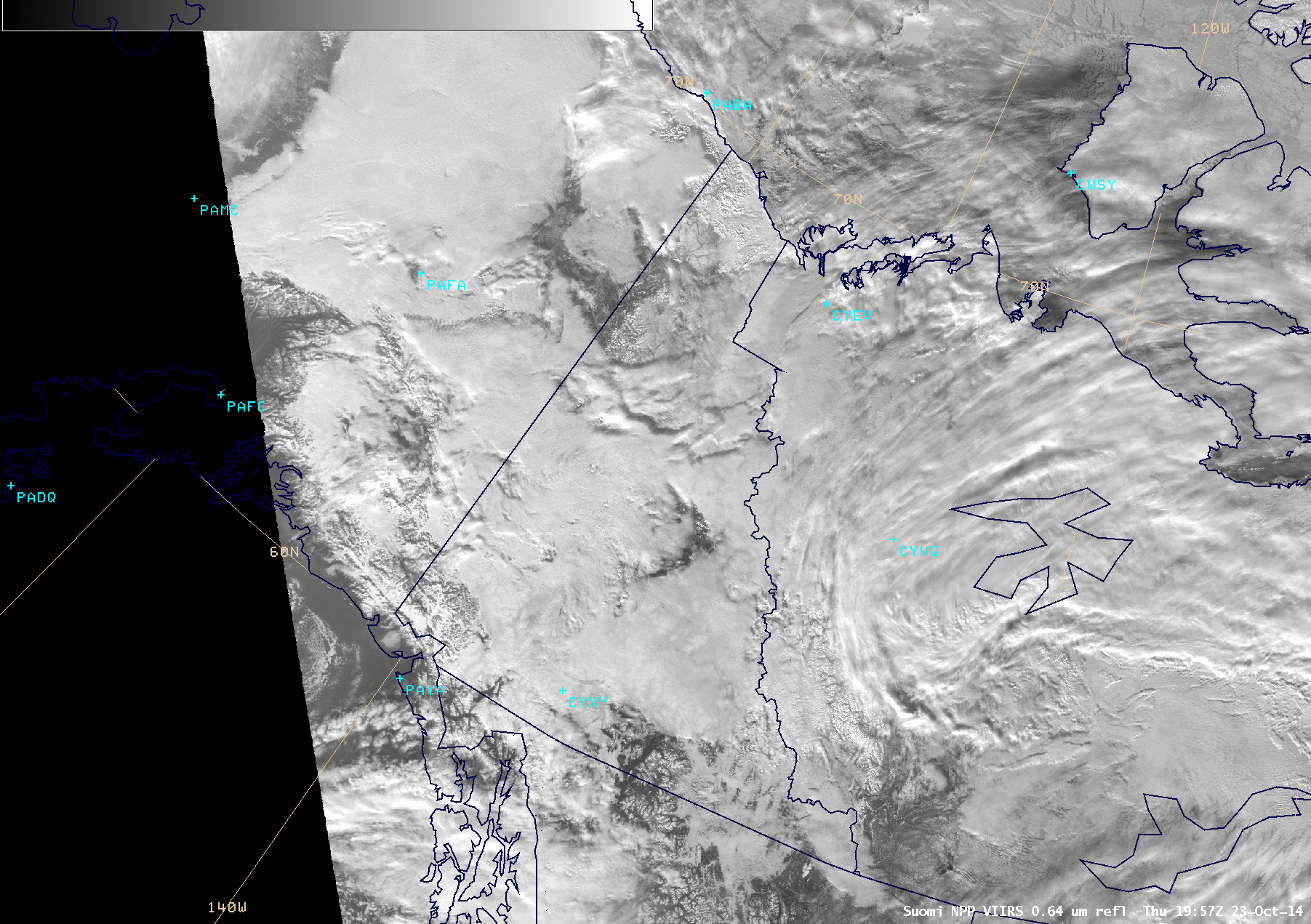The launch of an Antares rocket from Wallops Island, Virginia, failed on October 28th (NASA Statement on the failure). The thermal signature from the explosion and fire is evident in the animation of GOES-13 3.9 µm imagery above, within the red circle: the IR brightness temperature was 292.2K on the 22:30 UTC image (darker black pixel), compared to 286.9 and 286.7 K on the 22:15 UTC and 22:45 UTC images, respectively. The nominal time of the satellite image with the warm pixel is 22:30; however, the actual satellite scan time at Wallops Island’s latitude is 22:33 UTC. The launch was at 22:22 UTC.
On a side note, another feature that stands out in the GOES-13 3.9 µm images is the warm signature (darker black enhancement) of the waters of the Gulf Stream. A comparison of the Suomi NPP VIIRS Sea Surface Temperature product at 06:47 UTC (2:47 am local time) and 18:11 UTC (2:11 pm local time), below, showed a number of eddy features along the edges of the warm (darker red) Gulf Stream. Strong winds associated with a Nor’easter storm several days earlier helped to create these eddies.
View only this post Read Less


